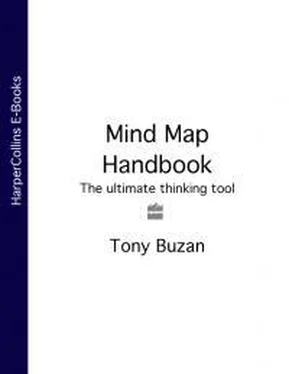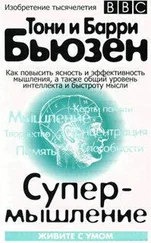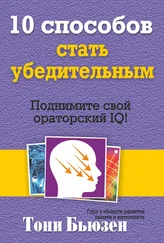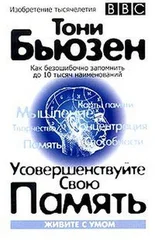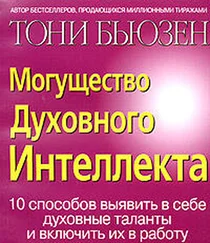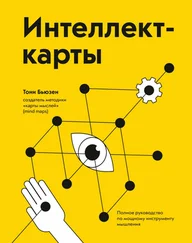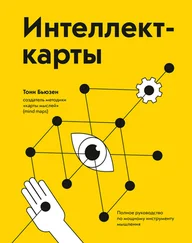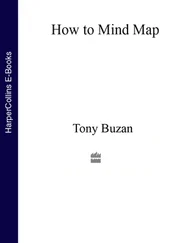All Mind Maps have some things in common. They all use colour. They all have a natural structure that radiates from the centre. And they all use lines, symbols, words and images according to a set of simple, basic, natural and brain-friendly rules. With a Mind Map, a long list of boring information can be turned into a colourful, memorable, highly organized diagram that works in line with your brain’s natural way of doing things.
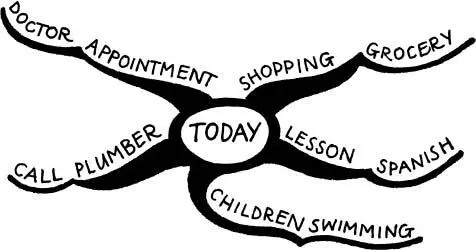
You can usefully compare Mind Maps to maps of a city. The centre of your Mind Map is like the centre of the city, and represents your most important idea; the main roads leading from the centre represent the main thoughts in your thinking process; the secondary roads or branches represent your secondary thoughts, and so on. Special images or shapes can represent sights of interest or particularly interesting ideas.
Just like a road map, a Mind Map will:
Give an overview of a large subject or area.
Enable you to plan routes or to make choices, and will let you know where you are going and where you have been.
Gather together large amounts of data in one place.
Encourage problem solving by allowing you to see new creative pathways.
Be enjoyable to look at, read, muse over and remember.
Mind Maps are also brilliant route-mapsfor the memory, allowing you to organize facts and thoughts in such a way that your brain’s natural way of working is engaged right from the start. This means that remembering and recalling information later is far easier and more reliable than when using traditional note-taking techniques.
What Do You Need to Make a Mind Map?
Because Mind Maps are so easy to do and so natural, the ingredients for your ‘Mind Map Recipe’ are very few:
Blank unlined paper
Coloured pens and pencils
Your brain
Your imagination!
How Can Mind Maps Help You?
Mind Maps can help you in many, many ways! Here are just a few!
Mind Maps can help you to:
be more creative
save time
solve problems
concentrate
organize and clarify your thinking
pass exams with good grades
remember better
study faster and more efficiently
make studying a breeze
see the ‘whole picture’
plan
communicate
survive!
save trees!
Let’s compare your brainand the knowledge in it to a library.
Imagine that your brain is a newly built and empty library waiting to be filled with data and information in the form of books, videos, films, CDs and computer discs.
You are the chief librarian and have to choose first whether you wish to have a small or a large selection. You naturally choose a large selection.
Your second choice is whether to have the information organized or not.
Imagine that you take the second option, not to have it organized: you simply order a dumpster of books and electronic media, and have it all piled in a giant heap of information in the middle of your library floor! When somebody comes into your library and asks for a specific book or place where they can find information on a specific topic, you shrug your shoulders and say: ‘It’s somewhere there in the pile, hope you find it – good luck!’
This metaphor describes the state of most people’s minds! Their minds, even though they may – and often do – contain the information they want, are so horribly disorganized that it is impossible for them to retrieve information when they need it. This leads to frustration and a reluctance to take in or handle any new information. After all, what is the point of taking in new information, if you are never going to be able to access the stuff anyway?!
Imagine, on the other hand, that you have a giant library, filled with incredible amounts of information on everything you ever wanted to know. In this new super-library, rather than all this information being piled randomly in the middle of the floor, everything is filed in perfect order, exactly where you want it.
In addition to this, the library has a phenomenal data-retrieval and access system that enables you to find anything you want at the flash of a thought.
An impossible dream?
An immediate possibility for you!
Mind Maps are that phenomenal data-retrieval and access system for the gigantic library that actually exists in your amazing brain.
Mind Mapshelp you to learn, organize, and store as much information as you want, and to classify it in natural ways that give you easy and instant access (perfect memory!) to whatever you want.
Mind Mapshave an additional strength. You would think that the more information you put into your head, the more stuffed your head would become and the more difficult it would be to get any information out. Mind Maps turn this thought on its head!
Why?
Because with Mind Maps each new piece of information you put into your library automatically ‘hooks on to’ all the information already in there. With more of these grappling-hooks-of-memory attaching to any piece of information in your head, the more easy it is for you to ‘hook out’ whatever information you need. With Mind Maps, the more you know and learn, the easier it is to learn and know more!
In summary, Mind Mapping has a whole range of advantages that help make your life easier and more successful.
It’s time for you to start your first one!
1.2
Making A Mind Map
Discovering Your Natural Mind Mapping Ability
Imagination and Association Game
Seven Steps to Making a Mind Map
Creating Your First Mind Map
In this chapter you are going to make your first Mind Map, starting with an Imagination and Association game.
You will graduate from this chapter knowing how to Mind Map and having learned all the ingredients that go into making a great Mind Map.
Discovering Your Natural Mind Mapping Ability
How does a Mind Map work? In the same way your brain works!
And fortunately, although your brain can do the most incredibly complex things, it is based on the most profoundly simple principles. That is why Mind Maps are easy and fun to create, because they work with your brain’s natural needs and energy rather than against them.
So what are the keys to your brain’s functioning?
Quite simply: imagination and association
Doubt it?Then try this game and make your first Mind Map.
Imagination and Association Game
Read the word printed in capital letters below and immediately close your eyes and keep them closed for about 30 seconds and think about it.
FRUIT
When you read the word and then closed your eyes, was all that popped into your mind a little computer printout of the word: F-R-U-I-T?!
Of course not! What your brain probably generated was an image of your favourite single fruit, or a bowl of fruit, or a fruit store, and so on. You probably also saw the colours of different fruits, connected the tastes to appropriate fruits, and similarly ‘experienced’ their aromas. This is because our brains work with sensory images with appropriate links and associations radiating from them. Our brains use words to trigger these images and associations. They produce 3-D pictures with numerous associations that are especially personal to us.
Читать дальше
